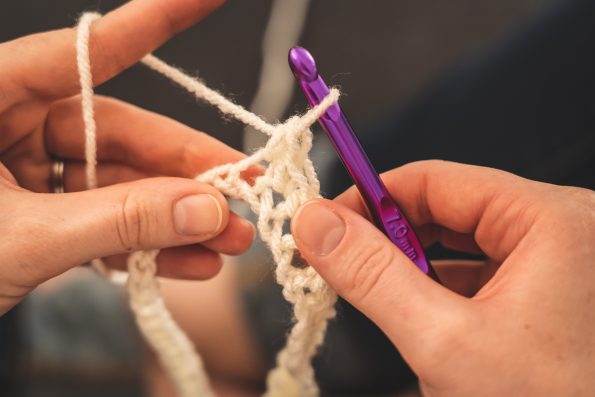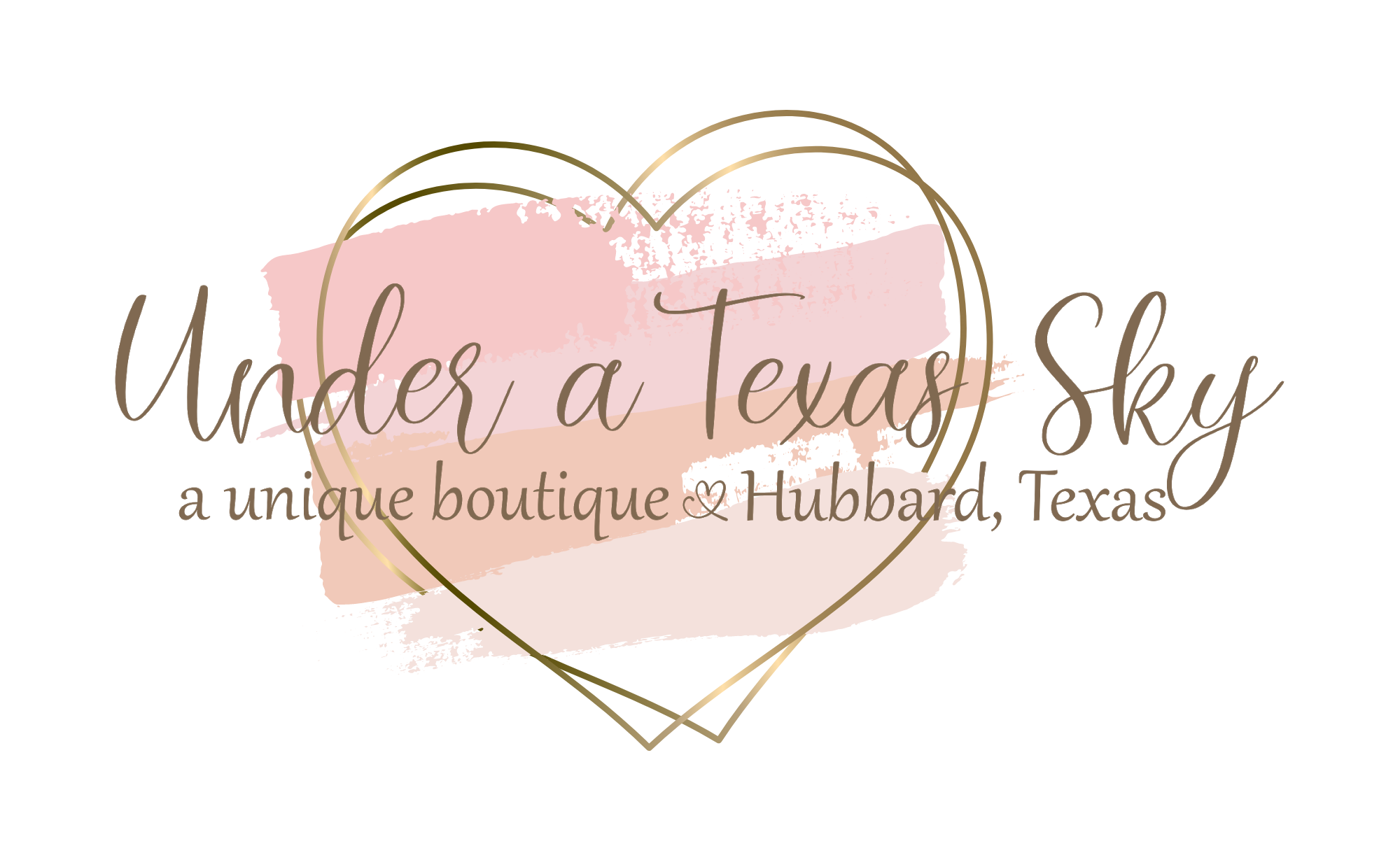If you are a crafter and have been afraid to try textile crafts- it may be time to get out of your comfort zone and stretch your crafting wings a little. You can use a variety of textiles in your craft arsenal. Usually you think of yarn first. Knitting and crochet likely comes to the forefront of your mind, but yarn is so versatile. All sorts of fabrics can come in to play as well. Let’s explore using textiles in crafting so you may find some inspiration and find a new textile craft idea you might like to tackle.

Crochet
Crocheting and knitting are two very similar ways of stitching with yarn. The big difference is that crocheting uses a single hook and knitting uses two needles. A lot of people assume that knitting and crocheting achieve exactly the same result, and that there’s therefore no reason to learn both. While this is true to an extent, there is a slight difference between the two: crocheting produces a much tighter stitch with less stretch, which can make it better suited to more rigid creations like coasters and other small items.
There are tons of resources for learning crocheting online. This includes sites with free patterns and video tutorials. Many people claim that it is easier to crochet than it is to knit, plus crochet hooks are typically cheaper to buy than needles. As with knitting, there are different styles and patterns that you can learn to create more diverse crafts.
Weaving
Weaving involves interlacing two strands of yarn on a weaving loom. It achieves quite a different result to knitting or crocheting – weaved fabrics can typically only be stretched in one direction. Some of the things you can create using weaving include coasters, placemats, tea cozies and scarves. Whereas crocheting and knitting is done using balls of yarn, weaving is typically done using cones of yarn.
Weaving requires quite a lot of space because it is done on a loom, which is partly why it’s less popular than knitting or crocheting. You can buy looms online in various different sizes. There are many beginner guides to weaving online. Start with simple patterns and creations to get a hang of it.
Embroidery
Embroidery involves using a needle and thread to sew various images, words and patterns into fabric. It’s probably the second most popular textile craft beyond knitting and crocheting because there is so much you can do with it. There are different stitches you can learn including cross-stitch and tapestry. Popular items to embroider include dish towels, tote bags, pillowcases, aprons, and clothing.
There are lots of embroidery tutorials and patterns available online. Start by getting yourself the right tools. This includes an embroidery hoop, needles and scissors. You may then want to start with some basic cross-stitch embroidery patterns. Embroidery does take patience, but is not too difficult to learn and you can easily undo your work if you get it wrong.
Macramé
Macramé is a unique craft that involves knotting yarn. Rather than using traditional yarn for knitting and crocheting, macramé uses a tougher thread that helps to hold knots well. Some of the most popular macramé creations include dreamcatchers, plant hangers and necklaces.
To get involved in macramé, you will need to invest in some macramé thread. No needles or hooks are required – you only need your hands. You’ll find lots of tutorials and guides online for making basic dreamcatchers and starter creations like coasters. From here, you can build up your skills and try more challenging projects.
Quilting
Quilting is a method of sewing together lots of small pieces of fabric. Its most obvious use is when creating quilts. However, there are so many other cool patchwork craft ideas that you can look into including bibs, tote bags, laptop cases, table runners, soft toys, and clothing.
You can hand sew creations or use a sewing machine. It’s best to start with a fairly simple item and fairly simple pattern to get used to quilting. There are many beginner projects that you can look into online before moving onto more intricate patchwork projects.
Rug hooking
Think you’d like to make your own rugs? Rug hooking is one popular way of crafting rugs that involves pulling loops of yarn through a fabric such as burlap or linen. This is done using a hook known as a latch rug hook. You can make all kinds of amazing patterns and images using rug hooking. Possible creations include everything from bath mats to large shaggy rugs. It’s even possible to weave your own carpet!
There are plenty of rug hooking resources online that you can look into. This includes rug kits that you can buy online to create various detailed images from cartoon characters to floral patterns. Hooks can be bought very cheaply. Some people start by simply using a crochet hook.
Needle felting
Needle felting may be one of the oldest forms of textile crafts. It involves using unspun wool to make various creations (the most popular being cute animal ornaments and Christmas decorations). A needle is used to piece crafts together. Such creations can be quite fragile, which is why felting is rarely used for items like clothes.
There are several needle felting guides online that you can look into to get started. Kits can also be bought online which include various wools, a felting needle, a needle mat and finger protectors. Learning the ropes is fairly easy, but you should note that very intricate projects will take a lot of time and patience.
Tie dyeing
There are many methods of dyeing fabrics. One of the most popular and fun forms of DIY dyeing is tie dying. This involves folding and twisting fabric before dyeing it to create unique colorful and organic patterns. There are actually a few styles of tie dye ranging from traditional Shibori methods to modern psychedelic patterns. T-shirts are the most popular item that is tie-dyed, but you can also tie dye items such as bedding, pajamas, dresses, scrunchies and hoodies.
Tie dyeing is something you can experiment with to get your own custom patterns and effects. That said, there are many tutorials online for those that want to achieve specific patterns. All you need is fabrics and the right dyes.
Dressmaking
Dressmaking often involves blending a wide array of different craft skills. It is a means of turning fabric into clothing – which could include dresses or other items like jackets, jeans, pants, skirts, and shirts. For those who have dreams of getting into fashion, learning the art of dressmaking is key. However, for most people it’s simply a hobby (and an excuse to buy all kinds of amazing and wonderful fabrics!).
The basic dressmaking skills you’ll want to learn first are how to design and measure clothing. You’ll then need to learn the best way to cut fabrics (which usually involves fabric scissors or a rotary cutter). Sewing is typically done using a sewing machine for speed and precision. It’s worth starting with fairly simple dresses and building yourself up to clothes with straps, buttons, zips and pockets. There are many tutorials to explore online.
Shoemaking
Shoemaking is probably the most complex craft skill on this list. Learning to make shoes is truly an art that involves learning a variety of other craft skills including measuring, cutting and hand stitching. Of course, it can be a very fun craft to get involved in and you can design all kinds of weird and wonderful shoes to your custom specs. As with dressmaking, there are lots of fabrics you can use ranging from leather to suede.
Many people start with moccasins and slippers before moving up to more complex shoes like sneakers and boots. There are a few guides and tutorials online that can teach you how to design and measure shoes, as well as how to stitch them. You can even take shoemaking courses.
